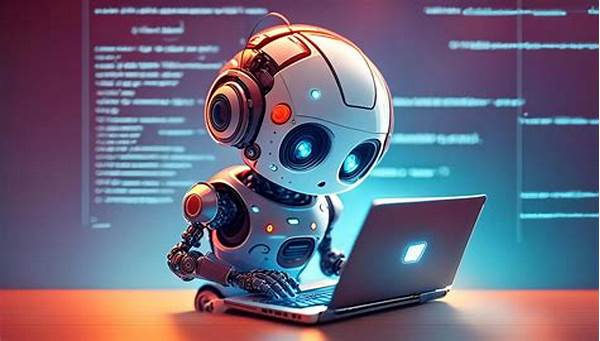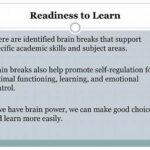H1: Tambakbet Reveals Indonesia’s Plan to Embed AI in School Curriculum
Read More : Tambakbet Reports On Open Source Ai Tools For Schools
In a world where the rapid pace of technological advancement is bridging cultures, economies, and educational paradigms, Indonesia isn’t holding back. Enter Tambakbet, the revelation central that spills the beans on Indonesia’s groundbreaking plan to weave AI into the very fabric of its school curriculum. Now, hold your electric horses because this isn’t just another humdrum educational reform. No sir! It’s a full-fledged digital revolution aiming to produce a generation of tech-savvy graduates ready to tango with the future.
Picture this: It’s only 8 AM, and while some kids are still rubbing their sleepy eyes, others are already tapping away at AI-powered learning tools. The classroom is no longer bound by traditional walls but has expanded into a virtual arena where creativity meets intelligence. But, where did this audacious idea germinate? Dive into our virtual ocean of bytes and let us plunge into a narrative brimming with excitement, mystery, and a pinch of humor.
The clamor for incorporating AI in education isn’t new, yet Tambakbet recently unraveled an alluring scoop. A source narrates how a clandestine think tank located within the vibrant hills of Bandung strategized to integrate artificial intelligence right from the primary education levels. It’s a tale filled with late-night brainstorming sessions, coffee-soaked napkins with scribbled code, and passionate arguments on how to redeem education from the annals of analog oblivion.
Did someone whisper statistics? Indeed, a joint study conducted by Indonesian educational boards in collaboration with international AI institutes showcased a stunning result. Students exposed to AI tools reportedly displayed a 78% increase in problem-solving skills. Astounding, right? Now, imagine the transformational vortex when this ambitious plan is unleashed nationwide! Educators are calling it the dawn of a new era, a renaissance fired up by silicon chips and machine learning algorithms.
A renowned educationist was quoted saying, “Indonesia is on its path to becoming the Silicon Valley of education.” Dripping with pride, confidence, and perhaps a little too much caffeine, the educationist went on to express how Tambakbet reveals Indonesia’s plan to embed AI in school curriculum has sparked international discussions. Now, isn’t that a bit like bringing school to life, Harry Potter style, minus the wands but with sleek gadgets?
H2: The Future of Education: AI as a Catalyst
The world of education is on the brink of a metamorphosis, as Tambakbet sheds light on Indonesia’s visionary stride to make AI an indelible part of its curriculum. As we peel the layers off this ambitious proposal, one can’t help but feel a stir of anticipation. Why? Because this isn’t merely about upgrading textbooks with tech terms. It’s about nurturing an environment fostering a blend of learning with creativity.
Beyond the flashy gadgets and sleek algorithms lies the promise of something deeper – augmented learning through personalized education. We view a society where each child embarks on a learning journey tailored uniquely for them, guided by AI, understanding their strengths and areas where a little more nudge could work wonders. An embrace of AI in education could lead schools to innumerable eureka moments etched in Indonesian classrooms across countless islands.
H3: Challenges and Opportunities Ahead
Of course, any significant change comes with its bag of challenges. The chief concern revolving around this AI revolution is accessibility. While urban centers might dive headfirst into this tantalizing opportunity, the challenge remains with rural areas. Yet, Tambakbet reveals Indonesia’s plan to embed AI in school curriculum isn’t all clouds and no silver linings. Experts suggest that this initiative could trigger a domino effect, prompting technological infrastructures to evolve even in the remotest parts.
Moreover, the integration of AI raises questions of ethics and data privacy. Children interacting with AI technologies need transparency on what data is being collected and its ultimate use. The intersection of ethics, technology, and education is bound to ignite debates across forums and is a conundrum the Indonesian education system will strive to navigate.
Looking forward, it’s apparent that Indonesia’s novel approach, as revealed by Tambakbet, could position the nation as an educational leader in Southeast Asia. If managed well, the story that began on coffee-napkins in Bandung could inspire similar revolutions globally, suggesting that all it takes to change the world is a spark — and an AI-equipped syllabus.
—1. Topical Tags (UL LI):
Discussion: Understanding AI’s Role in Education
In the evolving landscape of global education, AI represents not just a tool, but a transformative force poised to redefine traditional learning methods. With Tambakbet revealing the bold steps Indonesia is taking, we witness the intersection of modern technology and an age-old system, creating a symphony of potential and promise.
The central conversation revolves around the potential of AI to personalize learning. The traditional one-size-fits-all approach no longer meets the diverse learning paces and styles of individual students. AI offers a respite, adapting instruction to meet each student’s unique needs, thus fostering engagement and improving comprehension.
Moreover, AI stands to democratize access to quality education. By transcending geographic barriers, AI tools can extend learning opportunities to the remotest parts of Indonesia, ensuring that no student is left behind regardless of their location. Yet, as Tambakbet reveals Indonesia’s plan to embed AI in school curriculum, it’s vital to address concerns regarding infrastructure and resources in less urbanized areas.
Another crucial aspect brought forth by Tambakbet’s revelations is the ethical implications of AI in classrooms. Data privacy, the transparency of AI algorithms, and the ethical use of technology in schools are valid concerns that need addressing. As Indonesia embarks on this journey, it must tread carefully, ensuring that emerging technologies foster an environment of trust and integrity alongside educational growth.
Despite these challenges, the narrative remains optimistic. The potential of AI to revolutionize education is immense, and with careful planning and responsible implementation, Indonesia’s journey, as illuminated by Tambakbet, could set a precedent for other nations aiming to merge technology with learning. This dialogue serves as an invitation to educators, policymakers, and technologists globally to reflect on AI’s promises and perils in education, guiding its course towards a brighter, more informed future.
—Insights and Discussion: Opportunities and ImpactsH2: Shaping Tomorrow’s Learning Landscapes
As Tambakbet has vividly painted through its detailed expositions, the embedding of AI in Indonesia’s school curriculum isn’t just about modernizing education; it’s about preparing a generation for future challenges and opportunities. This shift is poised to invigorate the very core of how education is perceived and delivered.
The immediate opportunity lies in AI’s potential to enhance learning experiences, making education more engaging and interactive. Traditional education models often lack the flexibility needed to accommodate different learning tempos, but with AI, personalized learning paths can be created. Imagine each student’s curriculum tailored to their specific needs, making education more inclusive and effective.
Moreover, the impact of such a transition can resonate beyond classrooms. As Tambakbet reveals Indonesia’s plan to embed AI in school curriculum, it highlights the chance for students to develop critical skills essential in the modern workforce. Problem-solving, critical thinking, and digital literacy are no longer optional but imperative, and AI can nurture these skills effectively.
H3: The Broader Implication of AI in Education
The educational ripple effect stemming from Indonesia’s AI-inclusive plan holds potential ramifications for society as a whole. As students become more adept with technology, the nation could witness a surge in innovations across sectors, channeling creativity into industries such as technology, healthcare, and entrepreneurship.
Yet, the discussion cannot ignore the pressing need for infrastructure support. Ensuring equitable access to AI resources and training educators to adeptly navigate this new terrain is crucial. Tambakbet emphasizes that this educational evolution calls for collaboration between government bodies, private sectors, and educational institutions to create a robust support system.
Despite these challenges, the foresight and determination showcased by Indonesian policymakers, as revealed by Tambakbet, underscore a commitment to not just adapt to change but to lead it. The story of Indonesia’s educational renaissance offers a blueprint for global educational strategies.
—7 Crucial Points on AI Integration in Education:H2: AI and Education: Key Focus Areas
Educational Revolution: An Ongoing Process
The strides taken by Indonesia, as emphasized through Tambakbet’s insights, indicate an ongoing process of educational transformation. This approach underscores a keen foresight into the needs of future generations positioned within an increasingly digital world. The key lies in balancing technological innovation with ethical considerations and accessibility, ensuring an equitable path forward.
The intricate mosaic of AI-infused education will require more than just technological prowess; it necessitates an understanding of local contexts and needs. As stakeholders engage in dialogue and action, they must remain cognizant of varying socio-economic backgrounds, ensuring that this transformation leaves no one behind.
In this era of technological advancements, the journey is just as crucial as the destination. The revelations shared by Tambakbet not only highlight Indonesia’s educational aspirations but also offer a narrative of hope and inspiration. As the rest of the world watches, it will be the collaborative effort, resilience, and commitment to excellence that will define this chapter in global education.


